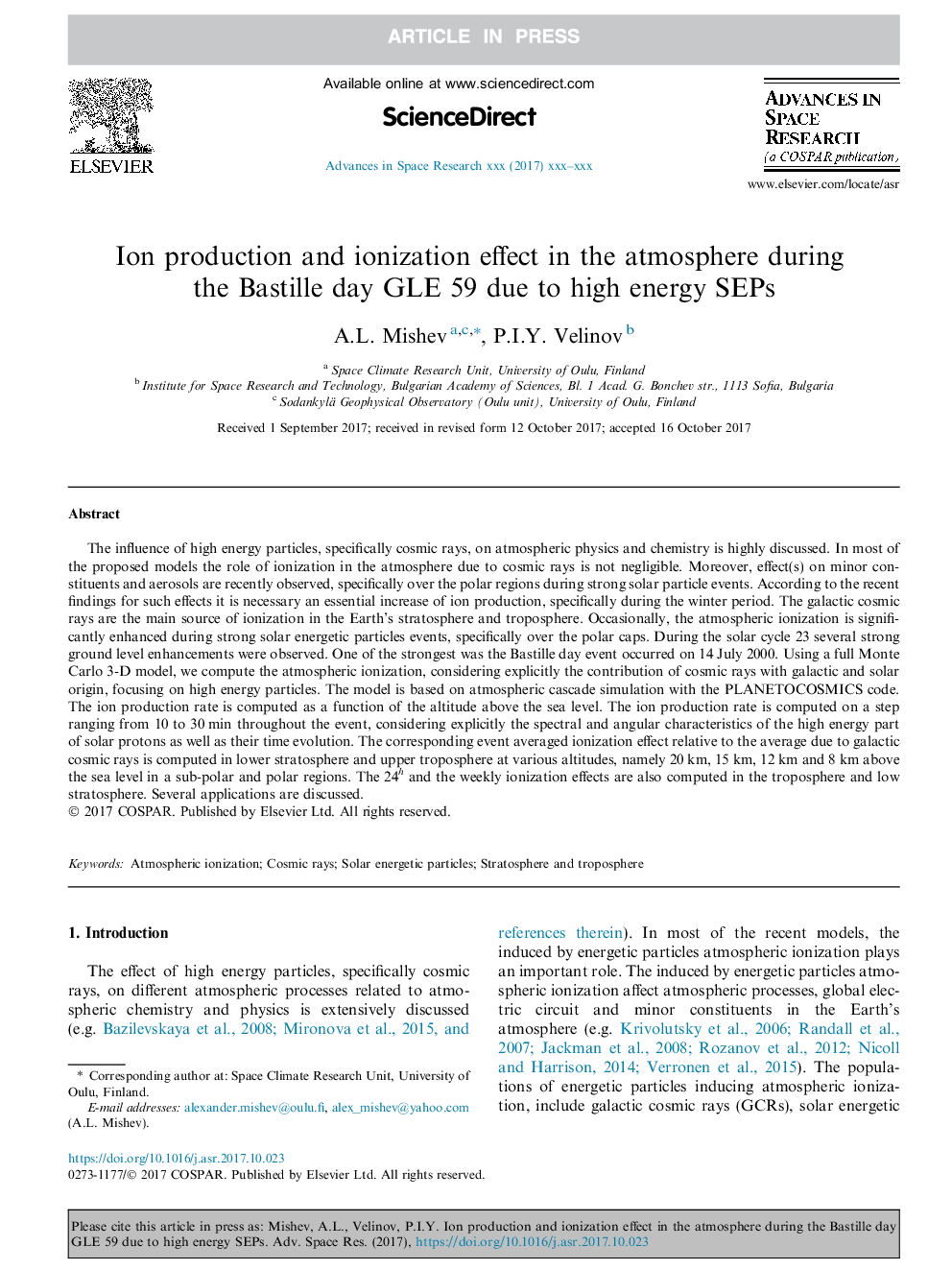| Article ID | Journal | Published Year | Pages | File Type |
|---|---|---|---|---|
| 8132424 | Advances in Space Research | 2018 | 10 Pages |
Abstract
The influence of high energy particles, specifically cosmic rays, on atmospheric physics and chemistry is highly discussed. In most of the proposed models the role of ionization in the atmosphere due to cosmic rays is not negligible. Moreover, effect(s) on minor constituents and aerosols are recently observed, specifically over the polar regions during strong solar particle events. According to the recent findings for such effects it is necessary an essential increase of ion production, specifically during the winter period. The galactic cosmic rays are the main source of ionization in the Earth's stratosphere and troposphere. Occasionally, the atmospheric ionization is significantly enhanced during strong solar energetic particles events, specifically over the polar caps. During the solar cycle 23 several strong ground level enhancements were observed. One of the strongest was the Bastille day event occurred on 14 July 2000. Using a full Monte Carlo 3-D model, we compute the atmospheric ionization, considering explicitly the contribution of cosmic rays with galactic and solar origin, focusing on high energy particles. The model is based on atmospheric cascade simulation with the PLANETOCOSMICS code. The ion production rate is computed as a function of the altitude above the sea level. The ion production rate is computed on a step ranging from 10 to 30â¯min throughout the event, considering explicitly the spectral and angular characteristics of the high energy part of solar protons as well as their time evolution. The corresponding event averaged ionization effect relative to the average due to galactic cosmic rays is computed in lower stratosphere and upper troposphere at various altitudes, namely 20â¯km, 15â¯km, 12â¯km and 8â¯km above the sea level in a sub-polar and polar regions. The 24h and the weekly ionization effects are also computed in the troposphere and low stratosphere. Several applications are discussed.
Related Topics
Physical Sciences and Engineering
Earth and Planetary Sciences
Space and Planetary Science
Authors
A.L. Mishev, P.I.Y. Velinov,
